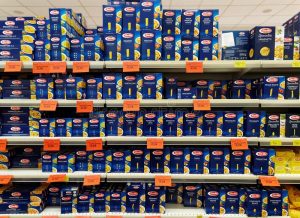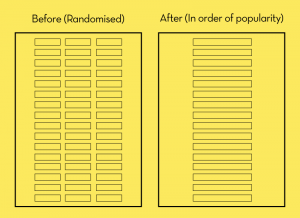Maybe it’s not too surprising that Barilla is the dry pasta market leader in Italy.
After all, it’s a brand that’s been around for more than a century.
What may be more surprising, however, is its sheer dominance. With almost 50% market share, it dwarfs its next biggest competitor, which contributes about 10% of total industry sales.

Is that because Italians think Barilla’s products taste several times better than the other brands? Almost certainly not. What can explain the brand’s runaway success then?
Just as the rich gets richer with the Matthew effect, businesses can build on existing success to achieve bigger success.
Barilla continuously funnelled its profits back into marketing, making it ever easier for Italian consumers to choose the iconic blue box over its competitors. Do that over decades and you may achieve market dominance.
The Matthew effect has been isolated in a famous experiment in the mid-00s—teenagers and young adults were exposed to a website with free downloads of 48 obscure songs.
(If you want to imagine the kind of music offered on the website, think guys with mascara and skinny jeans. Fellow millennials who were young in the mid-00s will know what I’m talking about.)
The most popular song did pretty well, taking up 5% of total downloads.
The next two most popular songs were close behind at around 4% each.
This was when all the songs were presented in a randomised 3 x 16 grid on the website, as seen in the “Before” frame in the image below.

But when all the songs were explicitly arranged from most downloaded to least (as seen in the “After” frame above), the same song’s “market share” spiked to 14%.
Next most popular songs? 7% and 5.5%.
(If you’re curious, the most popular song was a catchy pop-rock tune “She Said” by Parker Theory.)
Even with the small nudge of arranging the songs in order of popularity, the Matthew effect was exerting its influence.
You can imagine how a combination of many such nudges, exposed to a large enough population over a long enough period of time (i.e. marketing) can lead to runaway success.
This may seem somewhat discouraging to young brands who seek to challenge the status quo with modest resources. But the Matthew effect also offers some valuable insights for the brands that dare.
If you’re interested to find out how the Matthew effect can be a source of growth rather than despair, scroll down to my photo below and you’ll find my LinkedIn page and website URL.















